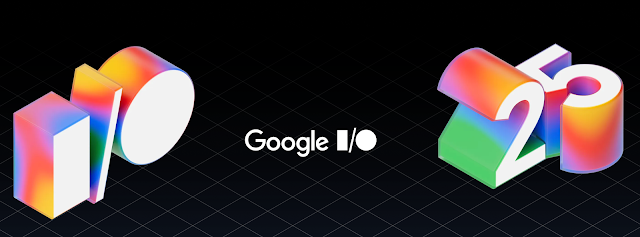Kotlin provides several powerful scope functions that make your code more readable and concise. These scope functions — let, run, apply, also, and with — are particularly useful when working with Kotlin's modern Android development framework, Jetpack Compose.
Scope functions in Kotlin allow you to execute a block of code within the context of an object. Each of these functions has different characteristics and return values. They can be used for various purposes, like modifying an object, chaining function calls, or simplifying code readability.
1. let – Transform the Object and Return the Result
The let function executes a block of code on the object it is invoked on and returns the result of the block. It's often used when working with an object and returning a result without modifying the original object.
Syntax:
val result = object.let {
// Do something with object
"result"
}
Example in Compose: Suppose we want to handle an event in Jetpack Compose like a button click, where we only need to transform the result or pass it on to another function:
val buttonText = "Click me"
val result = buttonText.let {
it.toUpperCase()
}
Text(text = result) // Output: "CLICK ME"
In this example, the let function transforms buttonText to uppercase without modifying the original string.
2. run – Execute a Block and Return the Result
run is similar to let, but it is typically used when you want to execute a block of code and return a result. Unlike let, run doesn’t take the object as an argument — instead, it works within the object's context.
Syntax:
val result = object.run {
// Do something with object
"result"
}
Example in Compose:
When creating a composable, you can use run to set up complex UI elements or operations:
val result = "Hello".run {
val length = length
"Length of text: $length"
}
Text(text = result) // Output: "Length of text: 5"
Here, we used run to access properties and perform operations on a string. The function directly returns the result without modifying the object.
3. apply – Configure an Object and Return It
The apply function is used when you want to modify an object and return the modified object itself. It’s particularly useful for setting multiple properties on an object.
Syntax:
val modifiedObject = object.apply {
// Modify object properties
}
Example in Compose:
For instance, in Jetpack Compose, you can use apply when configuring a Modifier object to add multiple modifications:
val modifier = Modifier
.padding(16.dp)
.apply {
background(Color.Blue)
fillMaxSize()
}
Box(modifier = modifier) {
Text(text = "Hello World")
}
In this case, the apply function allows chaining multiple properties on the Modifier object and returns the same object after applying changes.
4. also – Perform an Action and Return Object
The also function is often used when you want to perform additional actions on an object but don’t want to change or return a new object. It’s often used for logging or debugging.
Syntax:
val objectWithAction = object.also {
// Perform actions like logging
}
Example in Compose: Suppose you want to log a value when a user clicks a button in Compose:
val clickCount = remember { mutableStateOf(0) }
Button(onClick = {
clickCount.value = clickCount.value.also {
println("Button clicked: ${clickCount.value} times")
} + 1
}) {
Text("Click Me")
}
In this example, the also function is used to log the click count before updating the value of clickCount.
5. with – Execute a Block on an Object Without Returning It
The with function is used when you want to perform several actions on an object without modifying or returning it. It operates similarly to run, but unlike run, which operates in the context of the object, with requires the object to be passed explicitly.
Syntax:
with(object) {
// Perform actions
}
Example in Compose:
If you want to configure a composable’s properties, you can use with for better readability:
val modifier = with(Modifier) {
padding(16.dp)
background(Color.Green)
fillMaxSize()
}
Box(modifier = modifier) {
Text("Welcome to Compose!")
}
Here, with is used to apply multiple modifiers without repeatedly referencing the Modifier object.
Key Differences Between Scope Functions
-
let: Useful when you transform the object and return a result. The object is passed as an argument to the block. -
run: This is similar to let, but the object is accessed directly within the block. It is helpful when returning a result after performing operations. -
apply: Modifies the object and returns the object itself. Ideal for object configuration. -
also: Similar toapply, but used primarily for performing side actions (like logging), while returning the original object. -
with: Works likerun, but requires the object to be passed explicitly and is used when you need to operate on an object without modifying it.
When to Use Each in Jetpack Compose
-
let: When you must transform or pass an object’s value. -
run: When performing operations within the context of an object and returning the result. -
apply: When you need to modify an object (like aModifier) and return it after changes. -
also: For performing additional actions (e.g., logging or debugging) without changing the object. -
with: When you want to execute multiple operations on an object without modifying it.
Summary
Scope functions are essential to Kotlin’s functional programming style, offering a concise and readable way to work with objects. In Jetpack Compose, they help streamline UI development, manage states, and enhance overall code readability. Whether you’re configuring UI elements, performing transformations, or logging actions, scope functions can significantly reduce boilerplate and improve the efficiency of your Kotlin Compose code.
📢 Feedback: Did you find this article helpful? Let me know your thoughts or suggestions for improvements! 😊 please leave a comment below. I’d love to hear from you! 👇
Happy coding! 💻✨





















